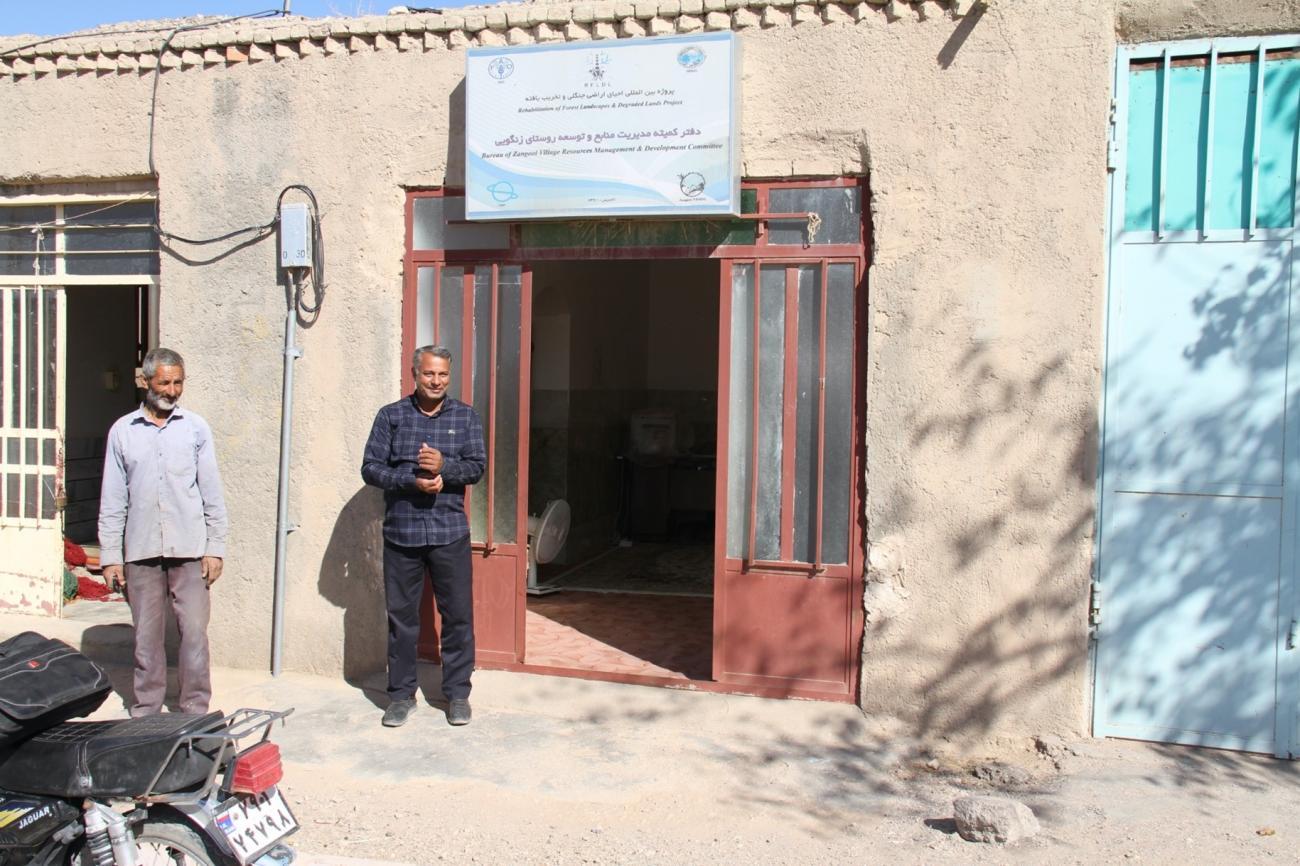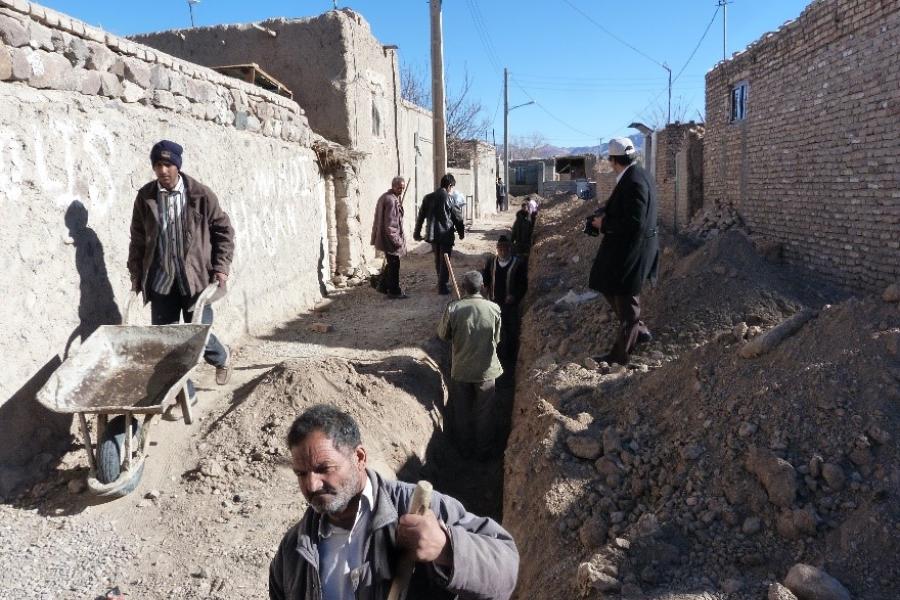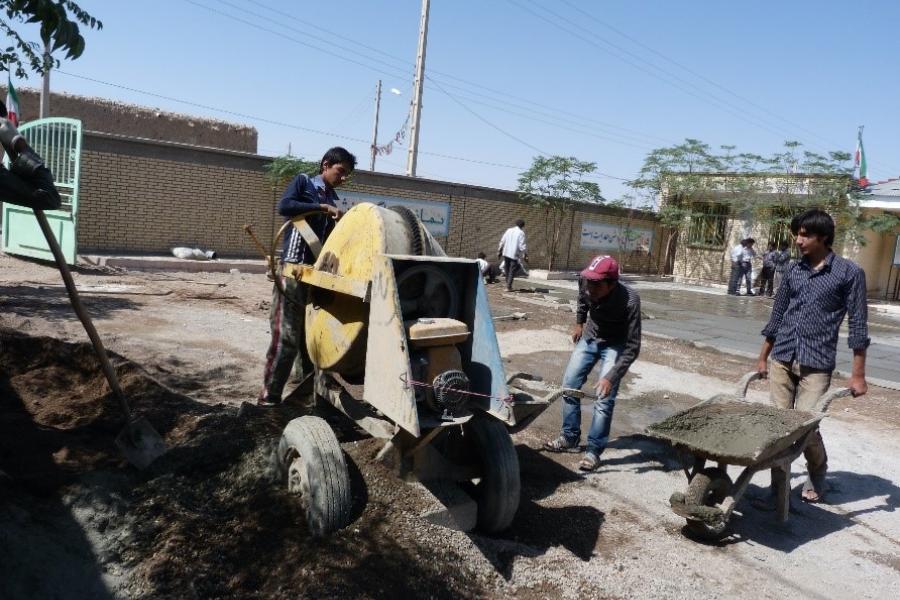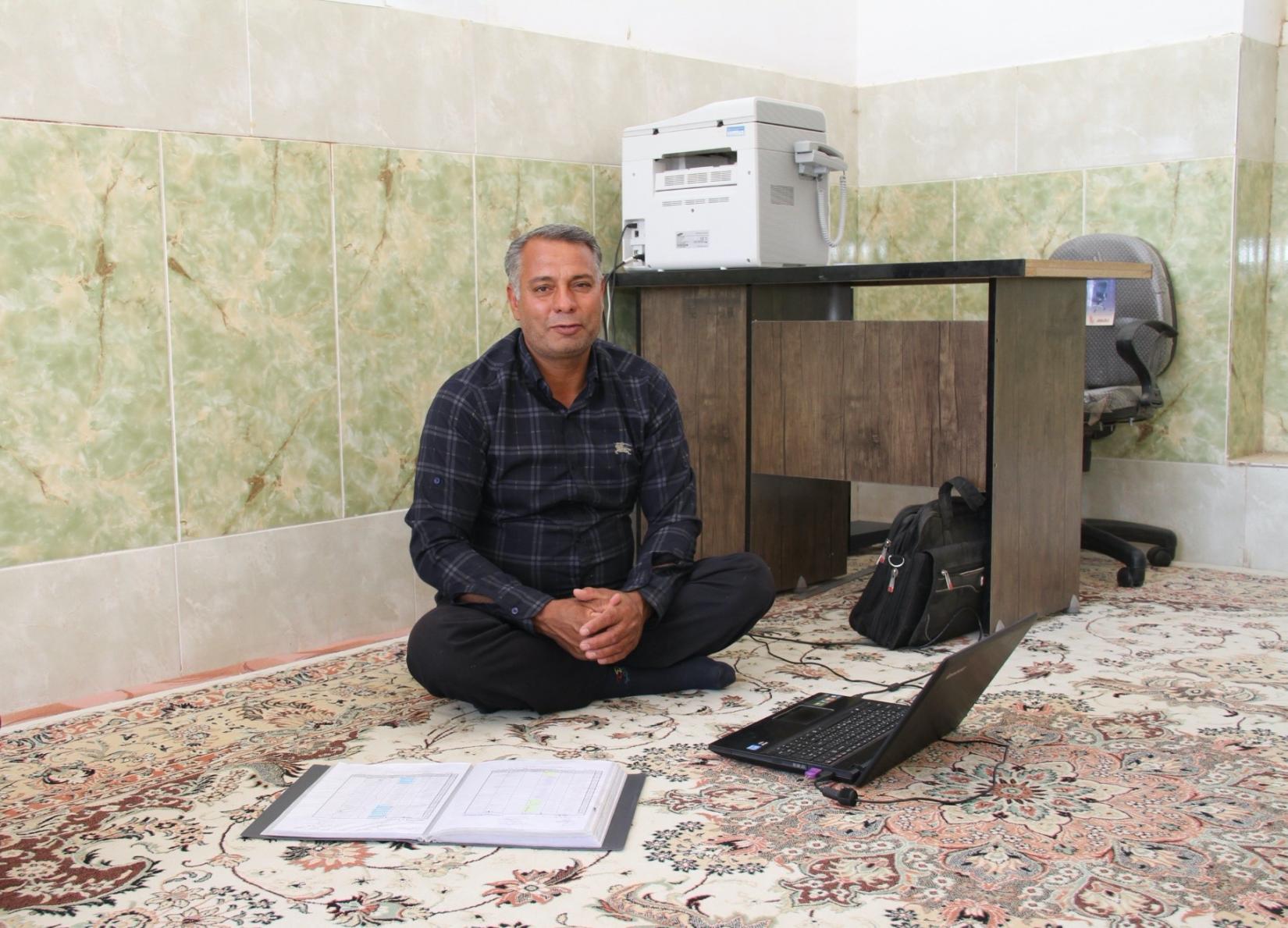Tapping into community potential in Iran

Villagers work together to pool resources and address longstanding challenges
A road to connect the village to urban areas. A school in need of rehabilitation An upgrade to the leaky pipeline wasting precious drinking water. Villagers in Zangooyi were holding their breath for many changes that would greatly improve their community, but the funding always seemed to be lacking.
In this rural settlement in South Khorasan Province in the eastern part of Iran, floods would come every winter, cutting the village off from the rest of the world and preventing the villagers from accessing urban areas, including for medical care or emergencies. A bridge was sorely needed to stop this isolation.
“When I was the village mayor for 10 years, we tried to repair the road connecting our village to nearby settlements, but we failed to do so because the government could not allocate us enough money, and we did not have the ability to mobilise the required funds ourselves,” explains Ali Akbar Ebrahimi, who has lived in the village for his entire life.
“We experienced similar difficulties in renovating our schools and overhauling the drinking water pipelines of the village. Both remained unresolved for years until FAO’s project began here,” Ali Akbar continues.


Since August 2011, FAO’s Rehabilitation of Forest Landscapes and Degraded Land project has worked with communities to tackle these problems. Funded by the Global Environment Facility and the Government of the Islamic Republic of Iran, the programme has empowered rural communities to organise themselves and work together to resolve problems in their areas. This included the creation of Village Resources Management and Development Committees (VRMDC), decision-making platforms enabling villagers to raise, prioritise and address pressing issues together.
The VRMDC in Zangooyi village has given residents a structure in which they can work together, collectively entering into partnerships with local authorities to deal with community challenges. Assisted by the FAO project, the community has worked over the last five years with the local Departments of Education, Road and Urban Development and Water and a local wastewater company to pave the courtyards of two rural schools, construct a road bridge over a seasonal river and overhaul the drinking water pipelines of the village.
“We assessed the amount of workload each project required, then set criteria for each household,” Ali Akbar says. “In this way, we could mobilise the required workforce for these development projects free-of-charge.”
Together, the villagers decided that each household should contribute two days of manpower. This type of contribution not only reduced the government-allocated budgets needed to complete these projects but also dramatically shortened the time the projects typically take.
“We could manage to change all the water pipelines of the village in less than two weeks. It also took less than one week to pave the school grounds,” Ali Akbar says.
Ali Hasani, a resident of Zangooyi, enthusiastically describes the changes, "The newly installed drinking water pipelines solved a number of issues. The new pipes are larger in size, meaning water flow to the houses is more stable. There are no longer road flooding caused by broken, worn out underground pipes and loss of precious drinking water [in this hyper-arid area] due to pipeline leakages," he says.

Pooling their resources
The FAO project also implemented a Sustainable Community Development Fund (SCDF), a communal fundraising body to pool residents' financial resources to support rural business initiatives and offer timely loans.
Ali Akbar, who is now the chief accountant of the village fund, says that when SCDF was established, “a limited number of households refrained from joining the Fund. But in less than nine months, when they found how helpful the SCDF was, they joined too.”
“Previously, the residents had to resort to bank financing, with a difficult assessment process and high-interest rates,” says Ali Akbar.
“Now, they can access loans at a reasonable rate, helping them finance their small business plans, get their homes repaired, purchase tools for their agricultural activities and even pay their over-due debts to the banking system. Nowadays, every household in the village has at least one member who has joined the Fund, paying a monthly financial contribution.”
These inputs allow the SCDF to lend 50 to 60 micro-loans annually. Zolfaghar, a local farmer, secured two micro-loans from the village fund based on his contributions over the past three years.
“I received a loan to start a new business producing concrete masonry units. This has created seven additional job opportunities in the village, enabling more households to make their ends meet,” he says.
In less than ten years, Zangooyi village has gone from a rural area unable to meet the needs of its community to one where every household contributes towards making the area a better place for all its members. By helping develop collective decision-making mechanisms and pooling financial capacities, FAO works with rural communities to tap into their own potential and ensure that development is people-led and sustainable, bringing benefits for everyone.
Learn more
- Website: FAO Country profile: Iran (Islamic Republic of)
- Website: FAO and the Global Environment Facility (GEF)
- Website: Rehabilitation of Forest Landscapes and Degraded Land Project



